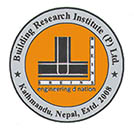
Today (NST)
Friday, Apr 25, 2025
Smart Search
Please post in your Technical Queries, Comments & Suggestions to Contact us......
Advertisement

For Advertisement
|
|
| Subscribe to BREINS Sci-Tech |
| Visit this group |

Concrete Technology
(ii) High strength concrete
High strength concrete with strength ranging from 50 MPa up to 200 MPa;
has been developed. In high strength concrete transition zone is made
stronger by addition of various kinds of admixtures; usually mineral
admixtures, filling up the micro-level voids.
Usually strength of high strength concrete is governed by strength of the aggregate itself. Testing of high strength concrete shows the mostly broken aggregate particles. So in high strength concrete, in order to enhance its strength, aggregates of higher strength and stiffness should be used.
Maximum Size of
Aggregate used
For any gradation of aggregates, larger the maximum size of aggregate
used, lower will be the total surface area in a given volume of concrete.
Lower the total surface area of aggregates, lower will be the water
requirement for the given workability, therefore higher will be the
strength at the given water-cement ratio.
Later it was found that the use of larger size of aggregate did not contribute to higher strength as expected from the theoretical considerations due to following reasons.
The larger maximum size aggregate gives lower surface area for developments of gel bonds which is responsible for the lower strength of the concrete. Secondly bigger aggregate size causes a more heterogeneity in the concrete which will prevent the uniform distribution of the load when stressed.
When large size aggregate is used, due to internal bleeding, the transition zone will become much weaker due to the development of micro cracks which will result in lower compressive strength.
It is to be noted that “high strength concrete” or rich concrete is adversely affected by the use of large size aggregate. But in lean mixes or weaker concrete the influence of size of the aggregate gets reduced. It is interesting to note that in lean mixes larger aggregate gives highest strength while in rich mixes it is the smaller aggregate which yields higher strength.
Age & Curing
The compressive strength of concrete is found to gain strength with
age because the process of hydration continues over a longer period.
The rate of increase in strength is independent of cement content or
grade of concrete but it is a function of humidity conditions.
The gain in strength is 100% in eleven years provided the concrete is kept in humid conditions throughout. However, if the concrete remains in dry condition (after initial 7 days of wet curing), the increase in strength is negligible beyond one year.